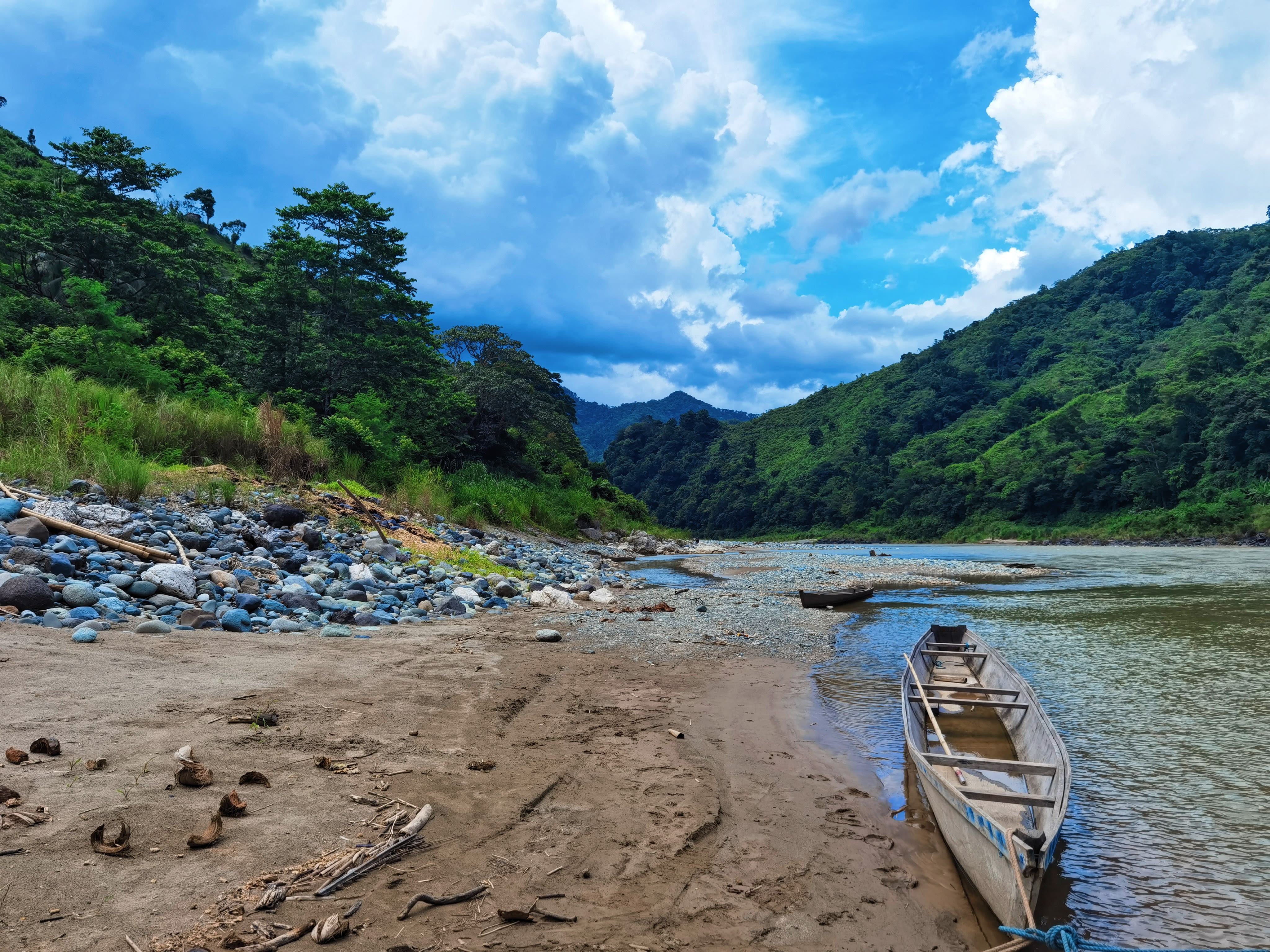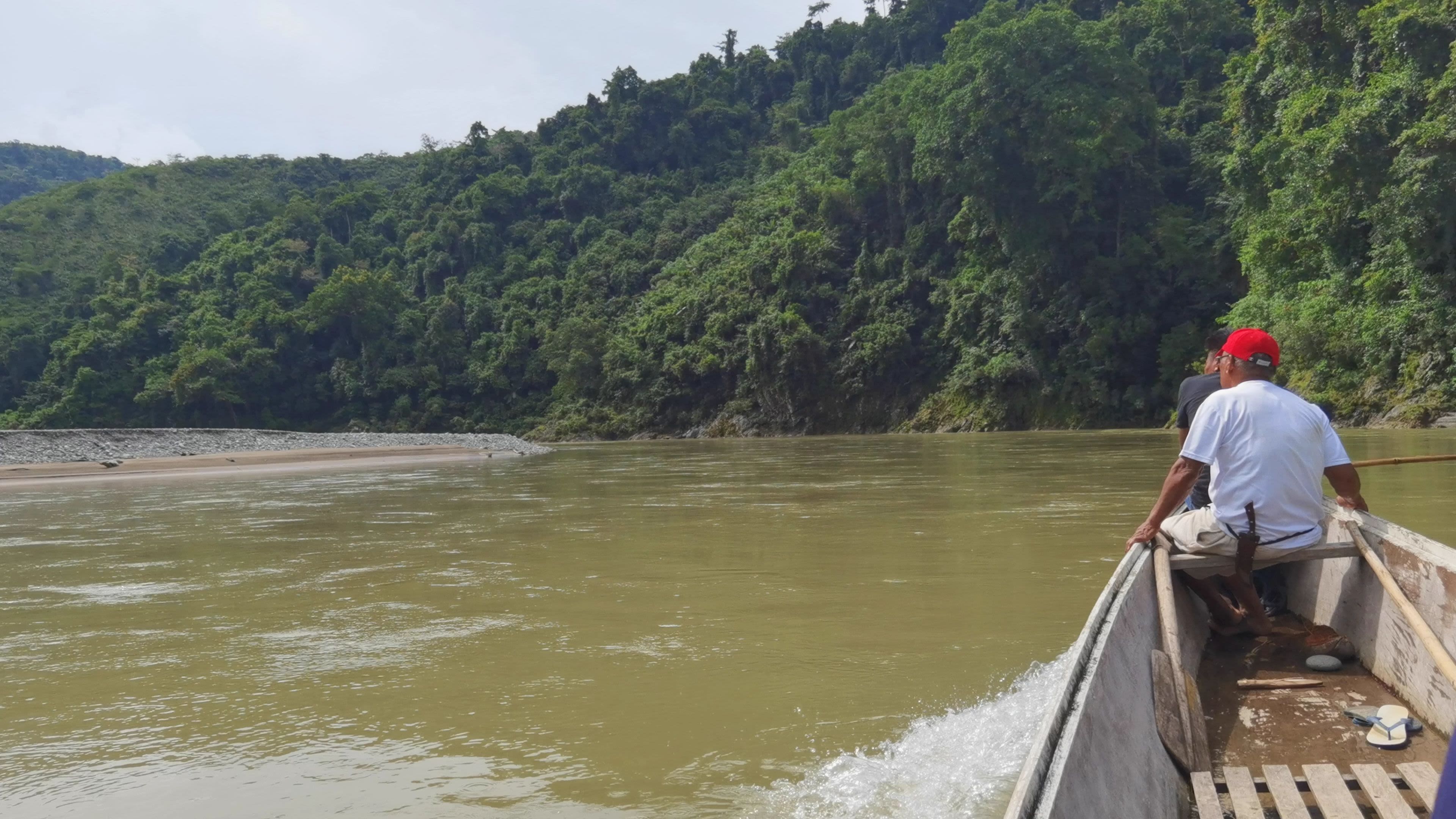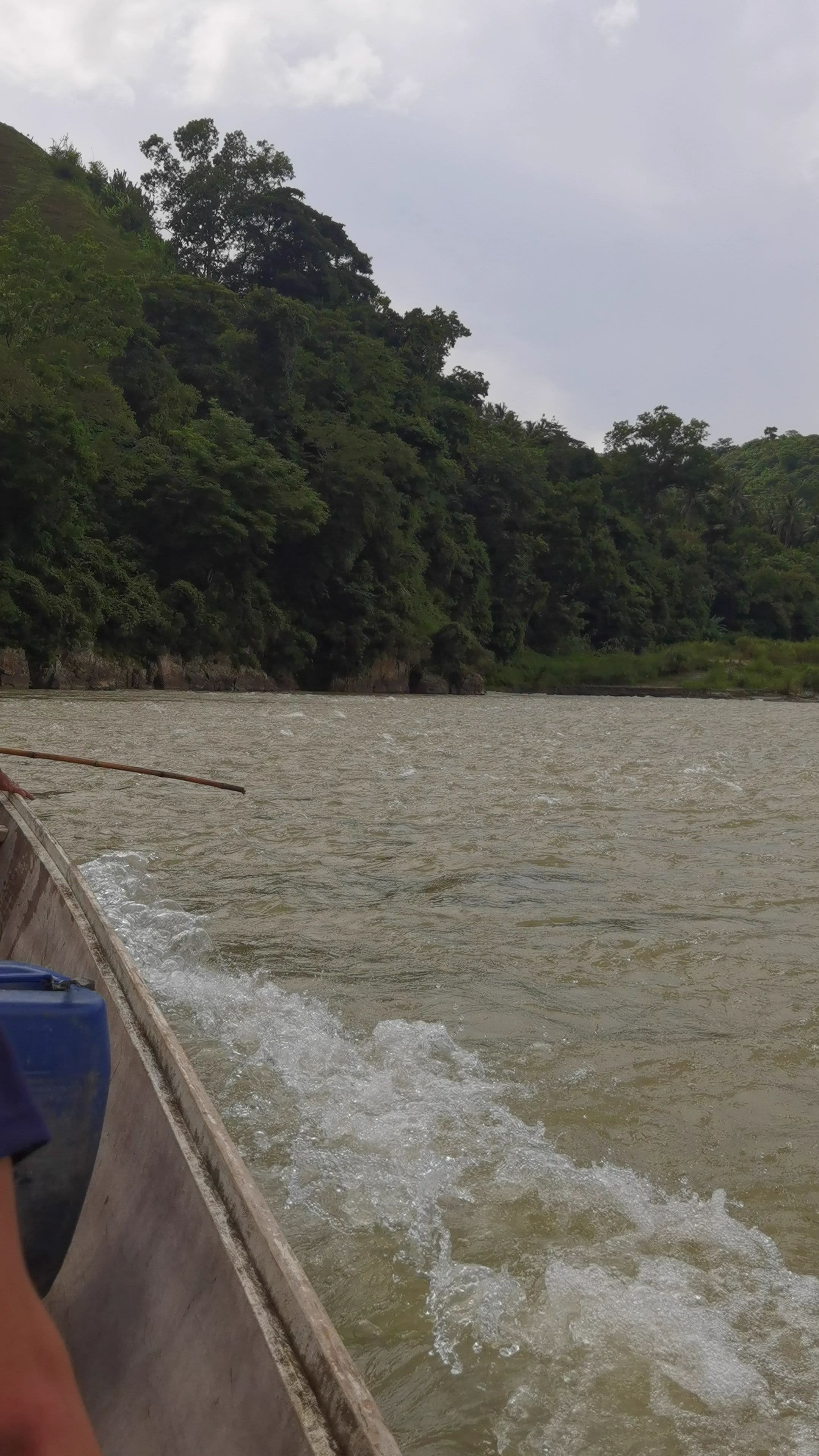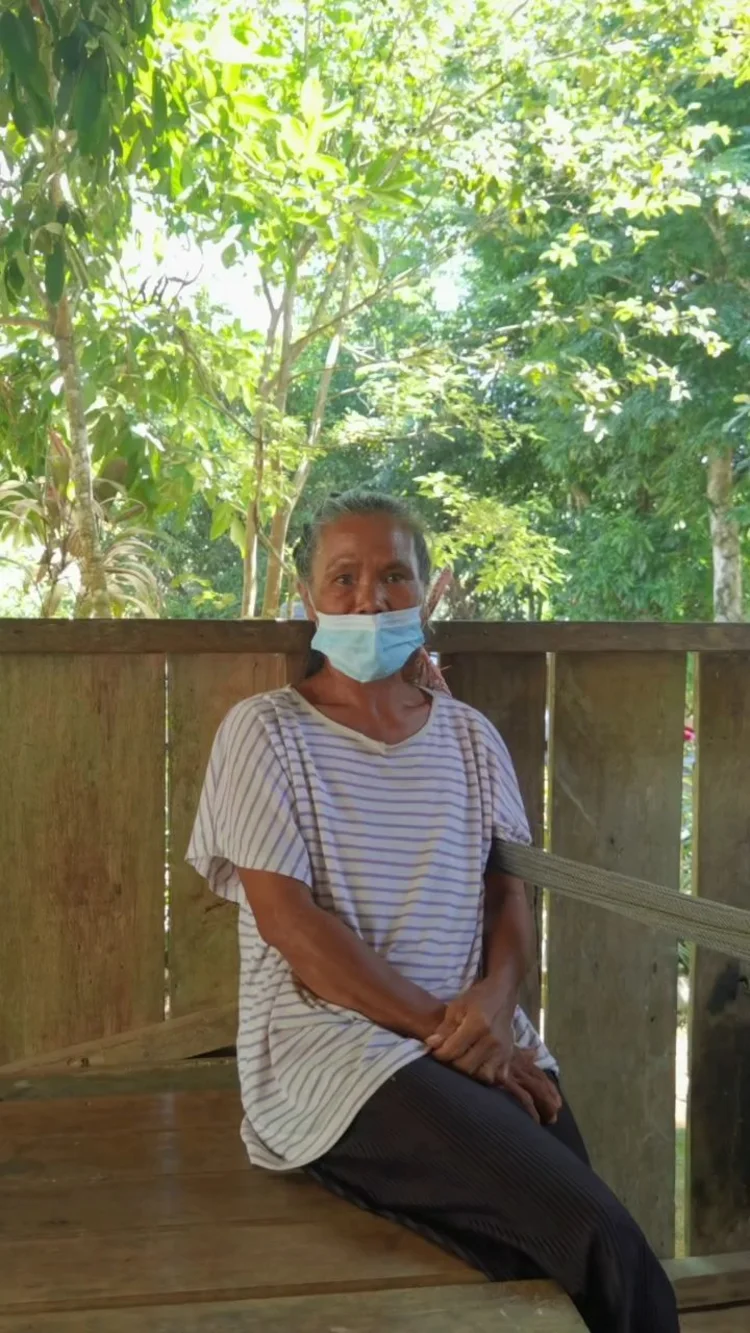To where the river leads:
a people's adodit

Adodit (story)
This is an adodit of resistance, resurgence, and reparation. It is a story of resistance of river people fighting for their rights to their ancestral domain and for the waters on which their shared identity is centered. It is a story of reparation - or the lack of it - of marginalized people who, without any fault, have been displaced in the name of progress. It is a story of resurgence of minoritized people reclaiming their indigeneity and authorship over their collective narrative, told in their own terms.
This is a tapestry of voices.
The Kabugao Youth (KY), co-authors of this narrative, led a contingent of Isnags to sit down with government agencies concerned with the proposed Gened dams construction. The amplification of the voices in this adodit was made possible by KY.

I
am
the
river.
I give life.
And if only I could speak like people do, I would say unreservedly, in a heartbeat:

I
Up north beyond the Cordillera mountain range in the Philippine archipelago is a community of relentless Indigenous peoples who self-identify as Isnag. One of their homes is the municipality of Kabugao, the official capital of the landlocked province of Apayao.
II
Flowing through Apayao is a river which is culturally and historically significant to the Isnag people.
I am
that
river.
For many generations, my resource-rich waters have nourished and sustained communities that live nearby. I have become the center of transportation, commerce, and industry. And though I am seen by the Isnag as a source of life, I have also taken the same as a result of disasters. Floods have periodically wrought havoc on Isnag communities and their environment. This natural phenomenon has caused displacement of populations, destruction of livelihood, and worst, deaths. The flooding has become so seasonal that it has been imprinted in the Isnag collective memory. This is manifested in their resiliency as a people.



III
The shared history of Kabugao tells stories of glory, misery, loss and countless others. The caps the Isnag wear are embellished with laurels that mark their united resistance, which goes back as far as memory goes - from Spanish conquest in the colonial period to the entrance of development aggression as of late. Why do these Indigenous peoples resist? This is a question I have been asking myself as well. If others go along with the flow, why do the Isnag go against the current?
IV
Kabugao draws life from me, the Apayao river. While the municipality has changed much over time, I have stayed more or less the same. What was once barren and fruitless land is now teeming with the laughter and tears of children. The historic tributaries and rivulets have now become passageways bridging villages together.
Though the people in the community speak the same language, they differ in some ways. Their group solidarity has recently been threatened by a proposed dam construction that would submerge homes, sacred grounds, and ancestral lands of the Isnag. This is the departure point of the interwoven narratives that flow in and from this story.
It is said that I have become a site and a symbol of resistance, having witnessed the struggles of the Isnag through time. For Indigenous peoples, identity is tied to both land and river. The entanglement of the Isnag to the lands which they have occupied since time immemorial is one borne of respect and reciprocity – at least it was, until the entrance of Pan Pacific Renewable Power Philippines Corp, the project proponent of the Gened megawatt dams, controlled by one of the biggest multinational conglomerate companies in the Philippines, San Miguel Corporation.
Intergenerational opposition
V
Under Philippine law, in order for any company to build on areas owned and occupied by Indigenous peoples, they must first seek the free, prior, and informed consent (FPIC) of the community/ies affected. The FPIC travails of Kabugao formally began five years ago. In April 2017, the government facilitated a series of consultative assemblies for the proposed megawatt dam. The majority of the people rejected the dam project. They asked for another assembly so that they could collectively assess the project, given the many questions begged by the proposal. While the proponents agreed to holding another consultation, it never materialized.
Then, in February 2019, Kabugao issued its first rejection of the project, in the form of a Resolution of Non-consent. In other words, the battlecry was no to dam. PanPacific asked that the decision be reconsidered. In September of the same year, the community expressed its second rejection. However, in December, by some hand, the non-consent of the community was overthrown during a fraudulent activity which resulted in the creation of a set of allegedly authorized elders representing the community.
A report on what is at stake for the Isnag.
For the whole year of 2020, negotiations and consultations were held. The pandemic might have slowed down the process, but in January 2021, there was a community decision-making event where the people rejected the project for the third time. Henceforth, another series of negotiations was made. In April 2021, an agreement was signed between the company and “unauthorized” community representatives. Then in August, an FPIC process marred with alleged irregularities was conducted.






Gened Dam - Project History
Gened Dam - Project History

Project Layout
Project Layout

Project Layout
Project Layout

The Apayao river is not only a source of sustenance, but also a playground for many Isnag children.
The Apayao river is not only a source of sustenance, but also a playground for many Isnag children.

The older Isnag harbor many a memory about the people of Kabugao and the river - often in the form of stories passed on from generation to generation.
The older Isnag harbor many a memory about the people of Kabugao and the river - often in the form of stories passed on from generation to generation.

This area will be inundated if the dam construction pushes through.
This area will be inundated if the dam construction pushes through.

And this area on the way to Waga, a village only accessible by boat ride, will be affected, too.
And this area on the way to Waga, a village only accessible by boat ride, will be affected, too.
VI
The hullabaloo that resulted from this issue incited a mixture of feelings among the elders of Kabugao. It always made me wonder, what is this creature progress that those people from PanPacific kept on peddling to us?
“We will bring prosperity here,” they said.
"Let us have your land in exchange for development.”
“Roads will be built, malls will be erected, and businesses will boom if you say yes.”
PanPacific and their allies said they would bring electricity and power. They said it was going to benefit not only my people, but also communities far and beyond. They said the dam would bring affluence to future generations, only that those living today needed to resign themselves to progress. They said my people had to lend me to them for this endeavor.








Here is one of the elevation markers made by PanPacific as part of its project scoping.
Here is one of the elevation markers made by PanPacific as part of its project scoping.

In sight, beyond the cyclone fence is a rivulet that leads to the Apayao river.
In sight, beyond the cyclone fence is a rivulet that leads to the Apayao river.

Another elevation marker inside the school area.
Another elevation marker inside the school area.

This is one of the sacred burial grounds that will be washed away with the dam construction.
This is one of the sacred burial grounds that will be washed away with the dam construction.

A dilapidated stage in the school that will likewise be submerged if the dam construction goes through.
A dilapidated stage in the school that will likewise be submerged if the dam construction goes through.

This public school at the center of Kabugao will be submerged as well, should the Gened dams be given the full green light. Other community members from the education center have expressed their opposition to the project.
This public school at the center of Kabugao will be submerged as well, should the Gened dams be given the full green light. Other community members from the education center have expressed their opposition to the project.

The quadrangle of the Kabugao Central School is one of the possible areas at the center which will be inundated.
The quadrangle of the Kabugao Central School is one of the possible areas at the center which will be inundated.
VII
So PanPacific presented progress in the image of megadams. This promise of progress divided the community. Some folded, but many stood their ground. Among the former were those who were duped into signing papers. The process of securing consent was marred with deceit and duress.
The community elders, in tandem with Kabugao Youth, deem the dam to be unnecessary to their daily living. Elders and young ones alike have expressed dismay and disdain. My people asked in chorus, “Must the welfare and progress of others come at our expense? Must we make the ultimate sacrifice for a cause which posterity will eventually suffer from?” The elders, doyens on whose backs Kabugao was built, asked repeatedly, “But what value are those papers if they mean giving away land which was otherwise in our possession since time immemorial?” ‘Tis true, the land which my people are to be dispossessed of is not their land. They possess it, but they do not own it. It is the land that owns them - the people - as a chieftain in the adjoining village once argued to his death.
A patriarch asked, “What have we done to deserve this? What sin did we commit for us to be sacrificed like this?”
I could not answer. How could I? I have not a tongue, not even a trachea to shout at the top of my lungs.
On another occasion, I heard a friend orate with indignation, “Only pigs are put up for sale. Humans should not be sold in the name of development. Why must we be for sale?” How should one respond to that?
Then one Isnag leader expressed, “If we say yes to dams, the trees will be next. Now when the forest is denuded, what shall we then hand to them?” How hurt they must be to say those words. Incapable of shame, I must say of the men who came with empty promises.



I present to you a few voices of my people.
Lakay Budin Balalang
Isnag Community elder
Lakay (elder) Budin Balalang, Indigenous Peoples Mandatory Representative (IPMR) of Barangay Dibagat and one of the main Isnag leaders opposing the Gened dams, asks, “What have we done to deserve this? What sin did we commit for us to be sacrificed like this?”
In the same vein, he says, "No amount of money will make us waver because we value our land. This land was bestowed upon us by the Lord and our ancestors in Apayao. Only the evil people would wish for our destruction. This is our land. This is our ancestral domain. The government already recognized that. We should be the ones deciding and our decision is NO. No to dam! No negotiation! Stop the operation!" (Transcript available here.)

Lakay Warling Maludon
Isnag Community elder
Elder Warling is the Indigenous Peoples Mandatory Representative (IPMR) of Barangay Waga. He strongly argues, “How can we not complain? How can we not oppose? The capital of Apayao will be the first to be flooded. So, where will the people here go? What will happen to the legacy of our forebears? What will happen to the graves of our ancestors? The remains of our deceased parents? It cannot be that these will be destroyed or that those who have died will die again.”
Transcript: available here
Lakay Warling's message to the youth
"...if there is no youth who will stand up, people won’t know what to fight for. But because there are [Kabugao] youth who stand up and are very good at it, sometimes, we follow their decisions..."
"But these children, sure, I thank them very much because they help us and they know that the projects that they [PanPacific] want to implement in our area are wrong."
Jann Alexis "Ot-ot" Lappas
Youth leader (Kabugao Youth)
"We know that we have a big role in this struggle against destructive projects entering our community. [...] It is the future of the Isnag that we are fighting for."
Transcript: available here.


The sentiment of the people is written on the rock.
The sentiment of the people is written on the rock.

This is part of the ground area that will be underwater.
This is part of the ground area that will be underwater.




VIII
Gathering the story of Kabugao unraveled tragedies from defraudment and exclusion to coercion and bribery. I froze at the sight of the area that would be erased from the recollection of unborn Isnags. Then I thought: oh, my people are divided and there is a struggle ablazed. I looked around. The forest was wailing. The water was raging. Even the wind was piping. Nature is in revolt.
The Isnag can tell manifold stories about their struggle. Their struggle is a lonely path defined by displacement and heartache. I find myself in abounding awe every so often when I see them unwavering as they assert, “No to dam!”
Boat ride to Waga, the village which will be entirely wiped out once the Gened dams are erected. There is no proper relocation site yet for the people who will be displaced.
Boat ride to Waga, the village which will be entirely wiped out once the Gened dams are erected. There is no proper relocation site yet for the people who will be displaced.
IX
…And so I tell their story, so that their struggle of resistance, reparation, and resurgence can live in the memory of every reader and listener in a world without an end. Even though when the time comes, I may no longer be around.
The Isnag resist the dam not only because they see no need for it, but also because it will destroy communal lands, which they have inherited from the past.
What they seek now is reparation for the pain PanPacific has brought upon their community - among many others, the estrangement of a people once united for the common good. In a way, this is how they reassert their indigeneity.
This is their resurgence.
X
You, dear reader, are now inheriting these narratives of pain. I hold you accountable for sharing these truths. I ask that you help me amplify the drowning voices of the Isnag.
Turn your gaze to Kabugao. It aches for your solidarity.
Here, hear its canticle:
Why do we resist?
It is not for us. It is for our children
and our children’s children.
Our lives cascade
up and down the river.
Our hopes and dreams, chiseled
by our roots, growing deep in the recesses,
nourished by the same old tributary.
If you banish us from our land,
you take away our lives.
Like languages that become motherless tongues,
we, too, will become landless people -
orphaned against our will, and
our home, be left a vast childless land.
We can tell stories from memory,
but memories are mortal.
With time, they get diluted, distorted, lost, robbed.
How can we tell the story of our people?
We cannot step in the same river twice
but we can always share the same resolve.

I echo the words best articulated by Lakay Budin,
No to dam.
No to negotiation.
Stop development aggression.

